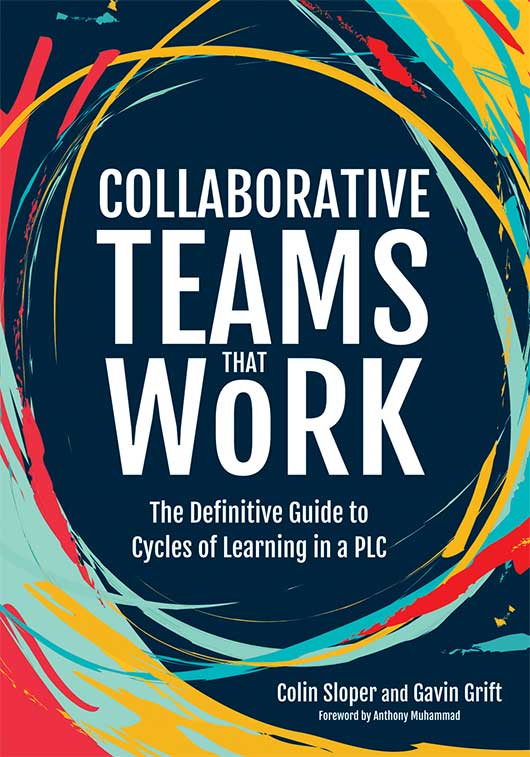Collaborative Teams That Work
The Definitive Guide to Cycles of Learning in a PLC
Collaborative Teams That Work is the ultimate guide to excellent collaboration. Rely on this resource as you set up collaborative teams within your PLC, and then refer back to it before, during, and after meetings to maintain focus on the right work.
Benefits
- Understand the positive effects of collaboration in education.
- Examine the cycle of learning and how it optimizes education for both students and teachers.
- Implement 12 actions to collaborate more effectively.
- Adapt the cycle of learning and collaborative techniques to other types of educational teams.
- See the big picture of collaboration and how the learning cycle fits into the educational system over many years.
Table of Contents
Section 1: Preparing the Learning
Action 1: Map the Learning Pathway
Action 2: Prepare the Preassessment
Action 3: Administer the Preassessment
Action 4: Respond to Identified Student Learning Needs
Action 5: Design the Learning Program
Section 2: Implementing the Learning
Action 6: Implement the Learning Program
Action 7: Monitor the Impact of Instruction
Action 8: Analyze Which Instructional Practices Are Having the Greatest Impact
Action 9: Adopt the Most Impactful Instructional Practices
Section 3: Reviewing the Learning
Action 10: Administer the Postassessment
Action 11: Determine the Team’s Impact on Student Learning
Action 12: Action the Team’s Learnings
Section 4: Adopting an Alternative Approach
Preparing the Inquiry
Action 1: Identify the Learning Issue
Action 2: Prepare the Preassessment
Action 3: Administer the Preassessment
Action 4: Respond to Identified Student Learning Needs
Action 5: Design Actions to Address the Learning Issue
Implementing the Inquiry
Action 6: Implement the Learning Actions
Action 7: Monitor the Impact of Actions
Action 8: Analyze Which Actions Are Having the Greatest Impact
Reviewing the Inquiry
Action 9: Administer the Postassessment
Action 10: Determine the Team’s Impact on Student Learning
Action 11: Action the Team’s Learnings
Section 5: Putting it All Together
Conclusion
Appendix A
Appendix B
STUDY GUIDE
REPRODUCIBLES
SUGGESTED RESOURCES
Books
- Buffum, A., Mattos, M., & Weber, C. (2012). Simplifying response to intervention: Four essential guiding principles. Bloomington, IN: Solution Tree Press.
- DuFour, R., DuFour, R., Eaker, R., & Many, T. W. (2006). Learning by doing: A handbook for Professional Learning Communities at Work (1st ed.). Bloomington, IN: Solution Tree Press.
- DuFour, R., DuFour, R., Eaker, R., Many, T. W., & Mattos, M. (2016). Learning by doing: A handbook for Professional Learning Communities at Work (3rd. ed.). Bloomington, IN: Solution Tree Press.
- Grift, G., & Major, C. (2020). Teachers as architects of learning: Twelve constructs to design and configure successful learning experiences (2nd ed.). Bloomington, IN: Solution Tree Press.
- Marzano, R. J. (2017). The new art and science of teaching. Bloomington, IN: Solution Tree Press.
- Marzano, R. J., Warrick, P. B., Rains, C. L., & DuFour, R. (2018). Leading a High Reliability School. Bloomington, IN: Solution Tree Press.
- O’Neill, J., & Conzemius, A. (2006). The power of SMART goals: Using goals to improve student learning. Bloomington, IN: Solution Tree Press.
Websites

